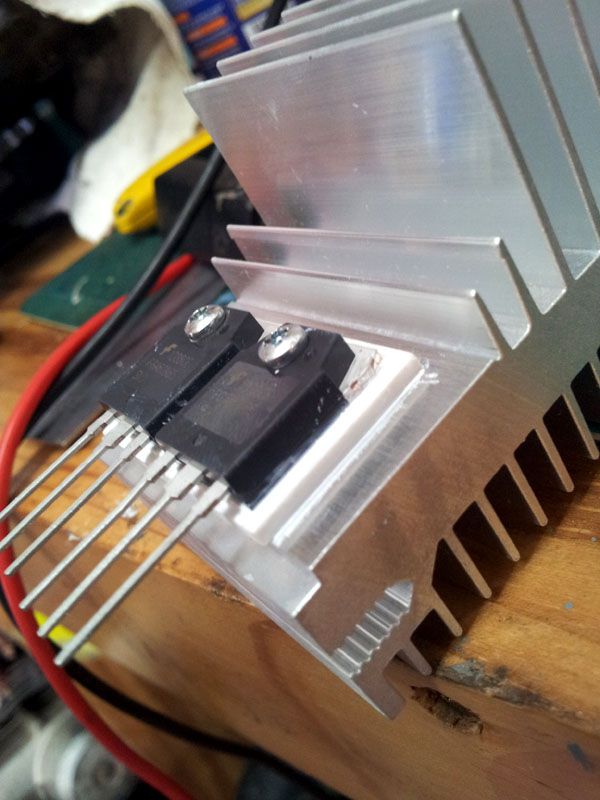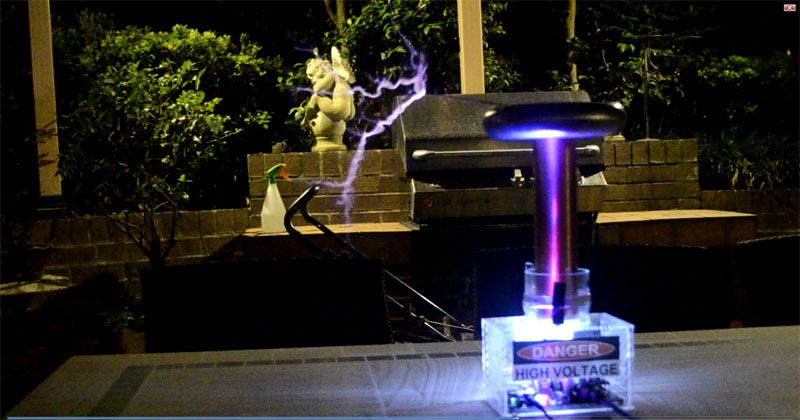Ya obits are fun, but boy oh boy are they fragile. I had better luck paralleling up several, it -seemed- to make them last longer.
WB btw SL, good to see ya around again =) . My coiling has been on hold for quite some time now due to financial issues. Life hasn't been kind. Oh and the mains grounds in my house failed recently and I can't afford to replace the wiring in the walls. I have my normally-TC-dedicated ground rod array hodge-podge wired into the mains circuit of my office to protect myself and my equipment, leaving my TCs sans RF ground. Woke up one day to find live mains on all my equipment chasis... that was NOT a fun day.
Anyway, I figured out why my audio modulation attempts always failed with my big SSTC; the secondary Q is way low. Relying on Slope Detection to demodulate FM/PWM into audible AM of the streamers/arc kind of requires the bandwidth slope response of the secondary to be sharp enough that significant amplitude is lost as the drive frequency moves away from the resonant frequency. Unfortunately, my coil barely loses 10% power moving as far as 50KHz away from f0. Hell, my PLL's lock range is only 50KHz (150-200KHz, f0 is 278KHz). This is why when I inject audio into the VCO of my PLL I get almost no audio on the output unless I overdrive the hell out of the VCO, even at 3kW of RF. When doing so the audio is so badly distorted that it defeats the purpose of audio modulation.
I'm planning to one day build a fixed frequency minimalistic low power coil that I'll PWM modulate the enable pins of the UCC chips on. I'm thinking I'll use a monolithic 1MHz oscillator to pump the UCC pair which will drive two mosfets in a Royer-esque topology (center tapped primary with the center fed by DC bus and the ends pulled to ground through the fets). The main feature of using a fixed frequency oscillator as the pump is that when the enable pins are brought low and oscillation at the secondary stops there is no gunk at the oscillation restart when the enable pins are brought high again. Normally the UCC chips ping the resonator while they are waiting for feedback signal to propagate back in to them to get oscillation going at the right frequency, but this is hell on the mosfets (I've witnessed 8MHZ! oscillation on the cycles before feedback gets going) and produces a lot of inefficiency. Time and money are the main limiters here though.
I'm also working on having my own universal SSTC driver boards commercially produced. It is a reinvention of Steve Ward's famous topology. No bells or whistles, just solid engineering designed to work. I so hated the multiple regulators and low voltage lines his drivers use. Also, I found his decoupling and RF feedback protection to be wanting. Fiddy has agreed to do the EagleCAD for me once I finish the schematic revisions and send it and the BOM his way. Time is the limiter here. I'm hoping to have the files all done before xmas (on my end, no rush on Fiddy).
I had a bunch of 1920s Triodes fall into my lap today and it is so damned tempting to try to make a nice oscillator or VTTC out of them. I don't have any of the usual accoutrements for power RF valves though, just tubes and filament supplies; not even any sockets. I don't think these have the plate dissipations needed for VTTC work anyway, but it would be cool to make a tube driven flyback driver.
How's your coiling been?






